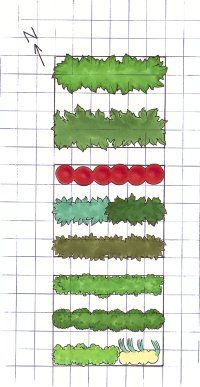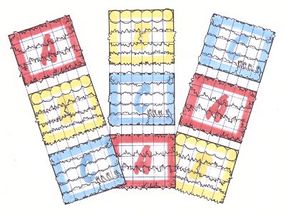You've put a lot of thought into your vegetable garden plan. You also know some vital information and dates: The names of the vegetables you're going to plant as well as planting and harvest dates. Now comes some substantial paperwork.
The size of your garden depends on your interest in gardening and how much time you'll be able to give to the garden. Some vegetable gardeners use every available inch of space; others use a small corner of their property. Some don't have much choice; this may be your case if you have a small garden to begin with or if you're gardening on a patio or balcony. The larger your garden, the more time and work it's going to need. Unless you're already hooked on gardening, it's probably better to start small and let garden size increase as your interest in gardening and confidence in your ability develop.
Advertisement
Before deciding the exact dimensions of your garden, check the list of vegetables you've chosen and the amount you're going to grow for each one. Then calculate if all the vegetables will fit into the allotted space.
Keep in mind that you'll probably map out successive plantings. Arrange your plantings to make the best use of your available space. Some vegetables (for example, cucumbers) sprawl, taking up much space in the garden. You can make use of vertical space, however, by training vines to grow on a trellis; this will free up usable planting ground.
Drawing the plot plan is the pencil-and-paper stage of planning. If you use graph paper, it will be easier to work to scale. A commonly used scale is one inch of paper to eight feet of garden space, but you can adapt the scale to whatever is easiest for you. Draw up a simple plot plan with your garden's measurements in all directions. Remember, no law requires a garden to be square or rectangular. Your garden can be round, curved, or any shape that fits your landscape.
Sketch circles for individual transplants, and rows for directly sown seeds. Take care in placing the vegetables. Place taller plants in the north or northeast area of the garden so they won't shade other plants as they grow. If you're going to use a rototiller, make sure the rows are wide. In smaller gardens it's more space-efficient to plant in wide rows or in solid blocks four to five feet wide. You must be able to reach the center of a wide row comfortably from either side.
If you're serious about gardening, you should keep records. Planning your records should be part of planning your garden. Build your records the same way you build your garden; profit from past mistakes and incorporate new ideas. Keep a daily record, noting such things as soil preparation, planting, weeding, fertilizing, bloom time, date crops ripen, and growing results. Also note any problems with weeds, insects, or rainfall, and whether the harvest of each item was sufficient, too much, or not enough. At the end of the growing season, you'll have a complete record of what you did, and this information will give you the basics for planning next year's garden.
Advertisement

